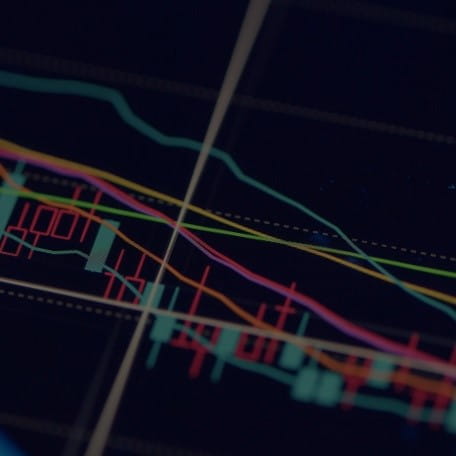Financial markets have followed last year’s positive returns with heightened volatility in 2022. Worries over inflation, interest rate hikes, recession and geopolitical crises have beset them, while the US faces the added uncertainty of mid-term elections this year.
While US stock markets have long been regarded as expensive largely because of the phenomenal rise of the mega tech stocks before this year’s drop in share prices, deeper analysis shows that the US offers interesting opportunities in overlooked areas as its economy enters a new era of technological development.
An economic soft landing?
At present, though, the US economy faces serious challenges. Fears of an impending recession grew at the end of last year when the Federal Reserve switched its policy to a more hawkish trajectory of rate rises, leading to concerns they could crash the economy to curb inflation.
While the US economy has remained impressively strong up to this point, there are concerns that the Fed will be unable to deliver a “soft landing” and that its bid to curb surging inflation will cause a recession. While time will tell, it is important to remember US households and corporates are in much better health than they have been for many years. Wages are rising, household debt is near record lows and excess saving balances are high, thanks to generous furlough payments during the pandemic. This will help US consumers to support an economy that will inevitably slow over the rest of 2022 and face the higher costs of inflation.
While bond yields have risen sharply this year, the good news is that the adverse impacts of this on equity markets could well be largely factored in. Real yields, or nominal yields adjusted for inflation, have strengthened overall from -110 basis points (bps) to around +50 basis points now, above the 10-year average. But rising real yields have disproportionately impacted the most speculative parts of the US market with certain sectors such as technology, software and special purpose acquisition companies (SPACs) hit the hardest.
Digital Disruption 1.0
Investors could look through these immediate concerns though and evaluate what is happening in the US within a longer-term context. Over the last decade, the US has undergone a major transformation. ‘Digital Disruption 1.0’ was one of the most important trends over this period, with new mobile technologies that have simplified designs delivering ground-breaking apps.
This expansion of the digital economy created strong demand and many of the largest tech companies today have been at the forefront of providing the building blocks of the digital world as we know it today, including the move to cloud (AWS and Azure), ecommerce, social media and advertising. They benefited from significant network effects and built incredible market caps. They have become household names and include Facebook (now Meta Platforms), Apple, Alphabet, Netflix and Google, collectively known as the FAANGs.
The tech bull market seen over the last decade can also be attributed to a second and related key driver, which is the emergence and eventual appreciation of new business models, such as platforms and software as a service (SaaS), in which businesses at scale can have enviable mature margins and potentially strong free cashflow generation. The combination of extremely high levels of recurring revenue and potentially low levels of capex have allowed investors to re-rate companies with these characteristics and, in many cases, substantially so.
Why the sudden downturn?
The momentum created by these two drivers has subsided, however, contributing to the corrections seen in US equities this year. The headlines may have focused on the largest tech companies (the FAANGs) but the real damage has been done further down the market cap spectrum. A lot of non-profitable tech companies with under $100 billion market capitalisations have experienced a comparable crash in valuations to the tech bubble and bust seen in the early 2000s. By April, nearly half of the Nasdaq index was down 50% or more from the highs in November 2021 (and around 25% of the Nasdaq was down 70% or more). The situation has deteriorated since then.
The overriding reason for this correction is rising interest rates. Until the Fed made it patently clear last November that it was serious about hiking interest rates, the only game in town was ever lower nominal and real bond yields. Negative real bond yields allowed investors to ascribe absurdly low discount rates to future revenue streams and meant that companies which were growing quickly could be assigned sky-high sales multiples. With bond yields rising sharply in recent months, this has led to a significant unwind in valuation multiples.
In late 2020, we identified almost 250 US companies that were less profitable than the FAANGs but significantly more expensive. We dubbed these companies the ‘Bubble 250’. Prior to the pandemic, this group traded on a comparable multiple of sales to the FAANGs but by late 2020 they had reached the eye-watering level of almost 20x sales.
It is now clear that this is not sustainable. In a backdrop of no longer declining discount rates, unprofitable, jam-tomorrow companies should be avoided and the market has made it clear it will not put “finger-in-the-air multiples” on companies which will not deliver positive free cash flow any time soon.
The mid caps deserve a closer look
Investors mainly focus on the US’ largest companies in the S&P 500 index that currently trade essentially in line with their 10-year average. But the valuations of the next tier of US companies, listed on the S&P MidCap 400 index, trade at 28% below their 10-year average, offering much better risk-adjusted returns. The mid caps deserve a closer look.
US mid caps have several timeless attributes. First, they represent a sweet-spot - they are less volatile and suffer fewer failure rates than small caps while offering higher growth potential than the large caps. Second, they are often in the process of increasing their market shares and improving their overall competitiveness. Third, they can reap the benefits as they grow while operating in the largest economy in the world, expanding from state champions through to regional and national ones without ever having to face the complexities of competing in overseas markets with diverse languages and laws. Fourth, they are often strongly aligned with shareholders because of higher inside ownership.
But a powerful reason to invest in US mid caps now is that we believe they are poised to benefit from what we call Digital Disruption 2.0, which is just starting and is set to be the most important theme in US equities for the next decade. It is a key focus for the Liontrust US Opportunities Fund and is characterised by the ‘democratisation’ of digitalisation, with its benefits now cascading to a broader range of companies. Increasingly, we can look to industries that have been slow to embrace digitalisation so far and which can now benefit from the enhanced efficiency the cloud offers; implementing software to both boost revenue, perhaps via CRM systems and digital advertising channels; and streamlining their operations. This means many more, and smaller, companies can implement and benefit from the tools and building blocks/foundations that have been developed.
The embracers will come into their own
For the Liontrust US Opportunities Fund, we search for companies that we believe will be drivers of disruption (disruptors), help fuel it (enablers) and benefit from it (embracers).
It was predominantly the disruptors, such as the FAANGs, that benefited from Digital Disruption 1.0 by introducing the innovations. However, over the next decade, we will see the embracers, which dominate the mid caps, and especially the healthcare, communication services and industrials sectors coming into their own.
For example, Brink’s, which is a global leader in cash management solutions. has a strong market position that is supported by financial strength and a management team with a long-term strategy to drive growth. Others include LivaNova, an American medical device manufacturer domiciled in the UK and focused on delivering innovative medical technologies; Advanced Drainage Systems, an established designer, manufacturer and provider of drainage products and services; and Verra Mobility, a global leader in smart mobility technology used on roadways to manage, for example, tolls, traffic violations and photo enforcement.
All these companies have true ‘moats’ or durable characteristics that will protect their competitive advantages over time. If they can leverage digital innovations for their commercial benefit then they might regain the performance they ceded to the large caps over the last decade.
KEY RISKS
Past performance is not a guide to future performance. The value of an investment and the income generated from it can fall as well as rise and is not guaranteed. You may get back less than you originally invested.
The issue of units/shares in Liontrust Funds may be subject to an initial charge, which will have an impact on the realisable value of the investment, particularly in the short term. Investments should always be considered as long term.
Investment in funds managed by the Global Equity (GE) team may involve investment in smaller companies - these stocks may be less liquid and the price swings greater than those in, for example, larger companies. Investment in funds managed by the GE team may involve foreign currencies and may be subject to fluctuations in value due to movements in exchange rates. The team may invest in emerging markets/soft currencies or in financial derivative instruments, both of which may have the effect of increasing volatility. Some of the funds managed by the GE team hold a concentrated portfolio of stocks, meaning that if the price of one of these stocks should move significantly, this may have a notable effect on the value of that portfolio.
DISCLAIMER
This is a marketing communication. Before making an investment, you should read the relevant Prospectus and the Key Investor Information Document (KIID), which provide full product details including investment charges and risks. These documents can be obtained, free of charge, from www.liontrust.co.uk or direct from Liontrust. Always research your own investments. If you are not a professional investor please consult a regulated financial adviser regarding the suitability of such an investment for you and your personal circumstances.
This should not be construed as advice for investment in any product or security mentioned, an offer to buy or sell units/shares of Funds mentioned, or a solicitation to purchase securities in any company or investment product. Examples of stocks are provided for general information only to demonstrate our investment philosophy. The investment being promoted is for units in a fund, not directly in the underlying assets. It contains information and analysis that is believed to be accurate at the time of publication, but is subject to change without notice. Whilst care has been taken in compiling the content of this document, no representation or warranty, express or implied, is made by Liontrust as to its accuracy or completeness, including for external sources (which may have been used) which have not been verified. It should not be copied, forwarded, reproduced, divulged or otherwise distributed in any form whether by way of fax, email, oral or otherwise, in whole or in part without the express and prior written consent of Liontrust.









